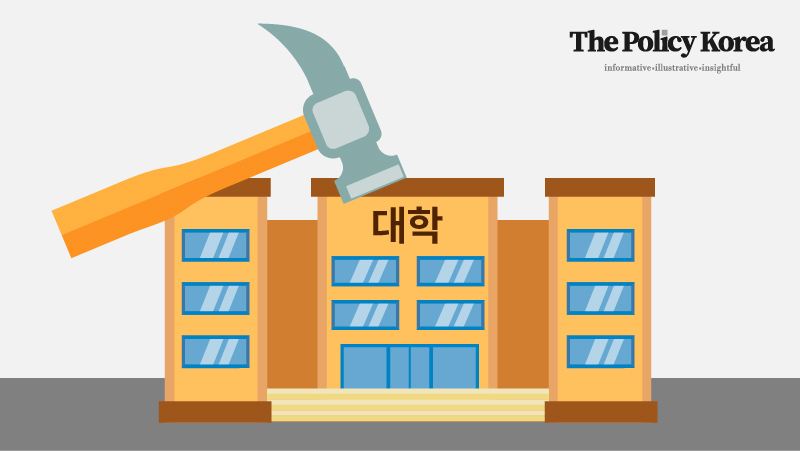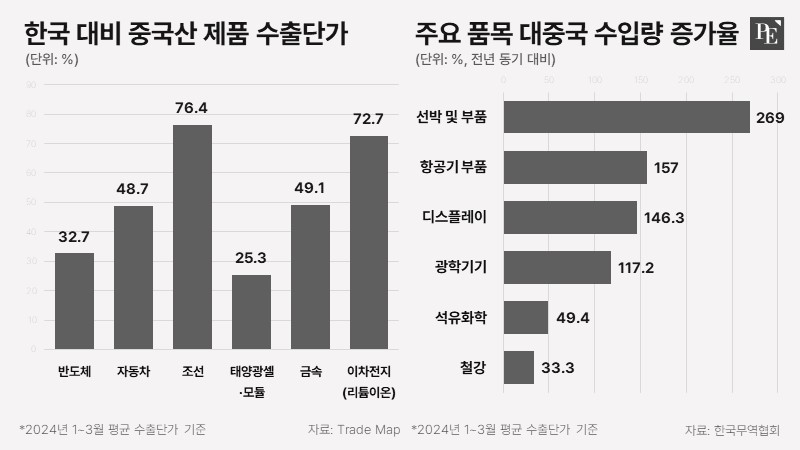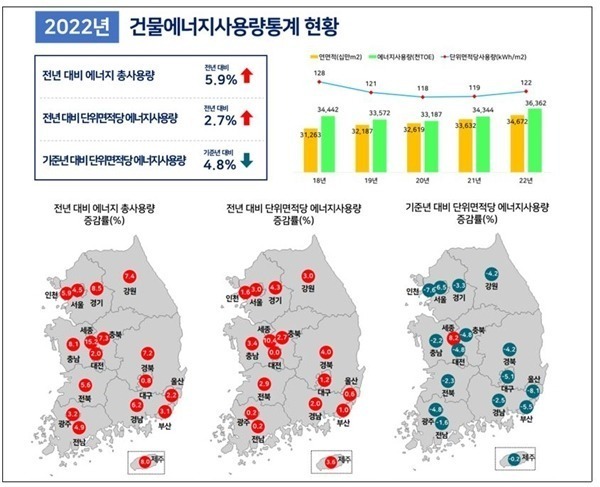[동아시아포럼] 中 지방정부의 부채 리스크와 신용 회복 전략
코로나19 이후 사회보장 지출 늘어나며 지방정부 재정 악화 지방정부 신용·가계 재무건전성 악화 등으로 불확실성 확대 부채로 인한 경제 악순환, 세수 증대 등 구조적 개혁 필요
[동아시아포럼]은 EAST ASIA FORUM에서 전하는 동아시아 정책 동향을 담았습니다. EAST ASIA FORUM은 오스트레일리아 국립대학교(Australia National University) 크로퍼드 공공정책대학(Crawford School of Public Policy) 산하의 공공정책과 관련된 정치, 경제, 비즈니스, 법률, 안보, 국제관계에 대한 연구·분석 플랫폼입니다. 저희 폴리시코리아(The Policy Korea)와 영어 원문 공개 조건으로 콘텐츠 제휴가 진행 중입니다.
중국은 지난 30년간 눈부신 경제 성장을 이어왔지만 최근 성장세 둔화가 가시화되면서 지방정부들이 재정적인 어려움을 겪고 있다. 코로나19 이후 저성장과 경기 침체가 장기화되는 상황에서 사회보장 지출이 늘어나 지방 재정이 악화됐고, 이로 인해 가계 재무건전성과 지방정부의 신용이 동반 하락하면서 중국 경제 전반에 불확실성과 불안 심리가 확산되고 있다.

중국 경제, 30년간 고속성장 후 최근 경기침에 이어져
오늘날 중국 경제는 중대한 전환기에 있다. 고속 성장을 거듭한 지난 30여년간 중국 정부는 암묵적으로 8% 이상의 성장률 달성이라는 정책적 목표를 강조해 왔다. 정부는 높은 성장률을 유지하기 위해 과도한 투자를 조장했고 중복 투자로 인한 투자 효율의 저하, 노동생산성 저하, 지역간·계층간 격차 심화 등의 문제를 지속적으로 확대 재생산했다. 중국 경제가 확장기일 때는 드러나지 않았던 지방 재정 불균형과 지방정부의 취약한 신용도 문제도 지적됐다. 이에 중국 정부는 국가의 목표를 성장 지상주의에서 내적 발전역량 강화과 산업구조의 고도화로 전환했고 지방정부의 신용은 장기적인 경제 성장과 사회 안정을 위한 핵심과제로 대두되고 있다.
지방정부의 재정 악화에는 지난 1994년 세제개혁이 영향을 미쳤다. 주룽지(Zhu Rongji) 당시 총리는 세제 간소화와 기업에 대한 세금 우대 등을 골자로 하는 세제개혁을 단행한 바 있다. 세제개혁은 중국의 경제 발전에 중요한 역할을 했지만 동시에 다양한 정책적 문제들을 초래했다. 중앙 정부의 세수가 늘어난 데 반해 지방정부의 수입은 크게 감소하면서 지방 재정을 약화시켰고, 결국 지방정부가 토지사용권 거래를 중심으로 한 세외수입에 의존하면서 부채가 빠르게 증가했다. 또한 중국은 고성장을 이어가기 위해 GDP 성장률 등 정부의 성과와 지방정부 관료들의 승진 기준을 연동하는 방식을 적용해 왔는데 이는 급속한 도시화와 맞물려 지방정부의 재정 지출 수요를 늘리는 요인이 됐다.
세제개혁·글로벌 금융위기 등으로 지방정부 신용 하락
2008년 글로벌 금융위기 당시에는 인프라 투자, 소비 촉진 등을 위해 4조 위안(약 7,590조원) 규모의 부양책을 시행하기도 했다. 이는 중국 GDP의 15%에 해당하는 규모로 지방정부가 경기 부양에 투입되는 예산의 70%를 부담했다. 중앙정부는 지방정부가 자금을 조달할 수 있도록 토지사용권 등을 담보로 투자금을 조달하는 지방정부자금조달기구(LGFV)를 설립하고 부외 금융이나 그림자 금융을 허용했지만 중앙정부의 경기 부양 조치 이후 지방정부의 부채가 늘어나면서 지방 재정의 지속가능성과 관리체계의 투명성에 대한 문제가 제기됐다.
이에 지난 2014년 중국 정부는 규범화되고 투명한 예산제도의 확립, 지방정부의 채무관리 강화 등을 골자로 하는 새로운 예산법을 제정하고 지방정부에 공공채를 발행할 수 있는 권한을 부여했다. 그너라 지방정부 차원에서 허용된 한도를 초과해 부채를 발행하거나 허위보증 등 부정한 방법으로 조성된 암묵적 부채를 통제·관리하고자 하는 노력은 부족했고 그 결과 지방정부의 부채가 급격히 늘어났다. 지난 2022년 기준 지방 부채는 35조 위안(약 6조2,000억원)에 이르렀으며 암묵적 부채는 60조 위안(약 10조6,000억원)을 넘어섰다. 골드만 삭스에 따르면 중국 지방정부의 총부채는 무려 13조 달러(약 169조원)를 초과할 것으로 추산된다.
경제가 호황일 때는 지방정부의 부채가 급증하더라도 관리가 가능한 수준을 유지할 수 있다. 당시 지방정부는 대출을 받아 지하철이나 고속도로 같은 대규모 건설 프로젝트를 수행했는데 단기적으로는 부채가 늘어났지만 장기적으로는 프로젝트를 통해 발생한 수익과 긍정적 외부효과로 이자 비용을 상쇄할 수 있었다. 해당 지역의 토지 가치가 높아지고 부동산 투자를 유치하면서 토지 양도세 등 지방정부의 세수 수입을 늘리는 효과가 있었던 것이다. 반면 경제가 불황기에 진입하면 한정된 수입만으로 부채를 감당하기 어려워 정부가 확보한 유동성이 공급되는데, 이로 인해 지방 재정의 건전성이 악화될 가능성이 높다.
부채 증가로 민간소비와 투자 감소하는 악순환 이어져
중국은 지방 재정의 분권 기조가 강한 나라로, 국제통화기금(IMF)에 따르면 지방정부가 연금·의료·실업보험 등 총지출의 85%를 책임진다. 그러나 최근 경기 불황에 더해 고령화와 도시화가 가속화되면서 지방정부의 지출이 증가하는 등 재정적 어려움을 겪고 있다. 2000년대부터 누적돼 온 부채로 지역사회 인프라와 공공재를 운용하는 지방정부의 역량이 약화되면서 안전과 안정에 대한 주민들의 신뢰와 기대가 저하됐고 이는 민간소비와 투자가 감소하는 악순환으로 이어지고 있다.
실제로 광시 좡족 자치구에서 공공재에 대한 투자 감소가 소비와 투자에 영향을 미치는 현상이 나타나고 있다. 광시는 중국에서 부채 대비 수익의 비율이 가장 지역으로 올해 상반기부터 부채로 인한 재정적 문제가 드러나기 시작했다. 광시의 사회보장·고용 지출은 전년 대비 8.7% 감소했으며 보건·의료 지출은 0.4% 하락했다. 같은 기간 고정자산투자는 21% 이상 감소했는데, 이는 투자의 과반을 차지하는 민간 부문의 투자 감소가 크게 작용한 것으로 보인다. 부채로 인한 재정 건전성의 문제가 지방정부의 사회보장 지출을 위축시켰고 이것이 민간 부문의 투자 전망을 악화시키는 악순환을 야기한 것이다.
지방정부의 채무자인 대형 은행들도 자산 안정성과 수익성이 악화됐다. 이와 관련해 최근 구이저우성의 LGFV인 준이 도로교량건설집단유한공사(Zunyi Road and Bridge Construction Group)가 채택한 부채 구조조정 전략에 주목할 필요가 있다. 준이 공사는 은행과 대출금 155.9억 위안(약 28조1,500억원)에 대한 상환기간 20년 연장을 협상하는 과정에서 이자율을 크게 낮추고 원금 상환을 10년간 연기했다. 하지만 준이 공사와 같이 사실상의 부채 탕감 사례가 많아지면 은행들은 재정적 압박에 직면할 수밖에 없다. 대출금의 주요 재원인 예금주들, 특히 중국의 가계가 경제적 어려움에 처하게 되면 장기적으로 소비심리와 성장 전망을 악화시킬 수 있기 때문이다.
따라서 중국의 지방정부는 세제개혁이 불가능한 상황에서 신용을 유지하기 위해 여러 가지 방안을 고려해야 한다. 대표적으로 중앙정부는 지방정부가 사회보장 지출 등을 위한 유동성을 확보할 수 있도록 레버리지 등 부채 관리 역량을 고려해 특수 목적의 국고채를 발행하는 방안을 검토할 수 있다. 하지만 지방정부의 재정 건전성 악화와 이로 인해 경제 전반에 발생하는 광범위한 영향을 고려할 때 이보다 더욱 시급하고 결정적인 조치가 필요해 보인다. 근본적으로 투자자들의 신뢰를 제고하고 지방정부의 세수를 늘리는 구조적 개혁에 초점을 둬야 한다는 의미다. 이를 위해서는 시장경제를 촉진하고 주요국과의 무역 긴장을 완화하는 데 초점을 맞춘 전략적 결단이 선행돼야 한다.
원문의 저자인 디 루(Di Lu)는 중국 올림푸스 헤지펀드 투자(Olympus Hedge Fund Investment)의 어드바이저입니다.
China’s local government credit dilemma
China’s economic growth ‘miracle’ has begun to be overshadowed by an evolving fiscal challenge. The depletion of local governments’ credit capacity has not only crowded out the rising demand for social security expenditure, but also undermined the financial health and confidence of Chinese households.

At a critical juncture of structural economic transformation, the sustainability of China’s local government credit is a pressing concern for long-term economic growth and social stability.
China’s tax revenue sharing reform, orchestrated by then premier Zhu Rongji in 1994, restructured China’s fiscal system to bolster central control of taxation, significantly diminishing local governments’ share of tax revenues and weakening their fiscal strength. As a result, local governments became increasingly reliant on non-budgetary revenue, particularly land use right transactions.
While the severe imbalance in the fiscal revenue structure was concealed during times of economic expansion, the inherent vulnerabilities of local government credit were always destined to come to the surface in more difficult economic times.
The national goal of maintaining a moderate to high GDP growth rate and the promotion criteria for Chinese local officials have both further exacerbated the financial strain. The GDP performance-linked advancement mechanism, paired with China’s rapid urbanisation, has created a surge in demand for fiscal expenditure at the local level.
The 2008 Global Financial Crisis prompted China to launch a 4 trillion RMB (US$547 billion) fiscal stimulus package, requiring local governments to raise 70 per cent of the funds. In response, local government financing vehicles (LGFVs) were created, allowing local governments to utilise off-balance sheet financing and even shadow banks.
The ensuing rise in local government debts triggered scrutiny of credit transparency and sustainability in 2014. While a new budget law empowered provincial governments to issue public debts, efforts to curtail implicit debts — those raised beyond statutory limits or through illicit guarantees — were less successful. By the end of 2022, while the official explicit local government debt reached 35.06 trillion RMB (US$4.8 trillion), the market estimated implicit debt surpassed 60 trillion RMB (US$8.2 trillion), with Goldman Sachs projecting a total debt balance exceeding US$13 trillion.
During its economic boom, surging local debt in China remained manageable as the direct returns from debt-funded projects and their long-term positive externalities often offset interest costs. Infrastructure initiatives such as the construction of new metro lines or highway connections can elevate land values and attract real estate investment, indirectly boosting local tax and land transfer incomes.
But during times of economic stagnation, the prolonged realisation of governmental cash inflow poses a threat to debt sustainability. The direct returns alone cannot service the debt as the anticipated long-term benefits wane and debts come due prematurely.
China is the world’s most decentralised nation in terms of subnational spending. According to International Monetary Fund research, China’s local governments are responsible for 85 per cent of general budgetary spending, bearing significant fiscal duties in areas such as pensions, medical care and unemployment insurance.
This arrangement faces challenges, especially as these areas experience rapid expenditure growth due to aging and urbanisation. The existing stockpile of local debts compromises local governments’ capacity to deliver these public goods, which creates a negative feedback loop, diminishing private consumption and investment due to residents’ decreased expectations of future security.
Declining local public goods provision has been seen in the Guangxi Zhuang Autonomous Region. With one of the nation’s highest debt-to-revenue ratios, Guangxi’s fiscal strain became evident in the first half of 2023. Its social security and employment spending dropped by 8.7 per cent, while health and wellness expenditure slipped by 0.4 per cent.
The region’s fixed asset investment plunged by over 21 per cent year-on-year, a decline significantly influenced by the private sector, which has historically constituted more than half of this investment. The feedback loop has dampened the private sector’s investment prospects, highlighting the adverse effects of social security expenditure being crowded out.
Commercial banks, especially the larger ones, are the primary financiers of China’s local government debts. Debt exposures could gradually influence the asset soundness and profitability of these banks. A noteworthy example is the debt restructuring strategy adopted by Zunyi Road and Bridge Construction Group, an LGFV from Guizhou province. The company negotiated an unexpected 20-year extension on its 15.59 billion RMB (US$2.13 billion) bank loans, dramatically reducing interest rates and deferring principal repayments for the initial 10 years.
If this practice become prevalent, banks could encounter tremendous operational pressure. Depositors — namely Chinese households — might be endangered, which could undermine consumer confidence and long-term growth prospects.
Addressing local government credit sustainability is a delicate task, especially with tax reforms seeming unlikely. Given the central government’s leverage flexibility, introducing special-purpose bonds backed by state credit for social security expenditures could provide some temporary respite.
But long-term remedies such as structural reforms to boost investment confidence and nurture local tax sources, particularly those that promote a market-oriented economy and ease tensions in foreign trade, demand patience and strategic determination. In light of China’s local fiscal dilemmas and their potential ripple effects on the broader economy, urgent and decisive action is imperative.



























